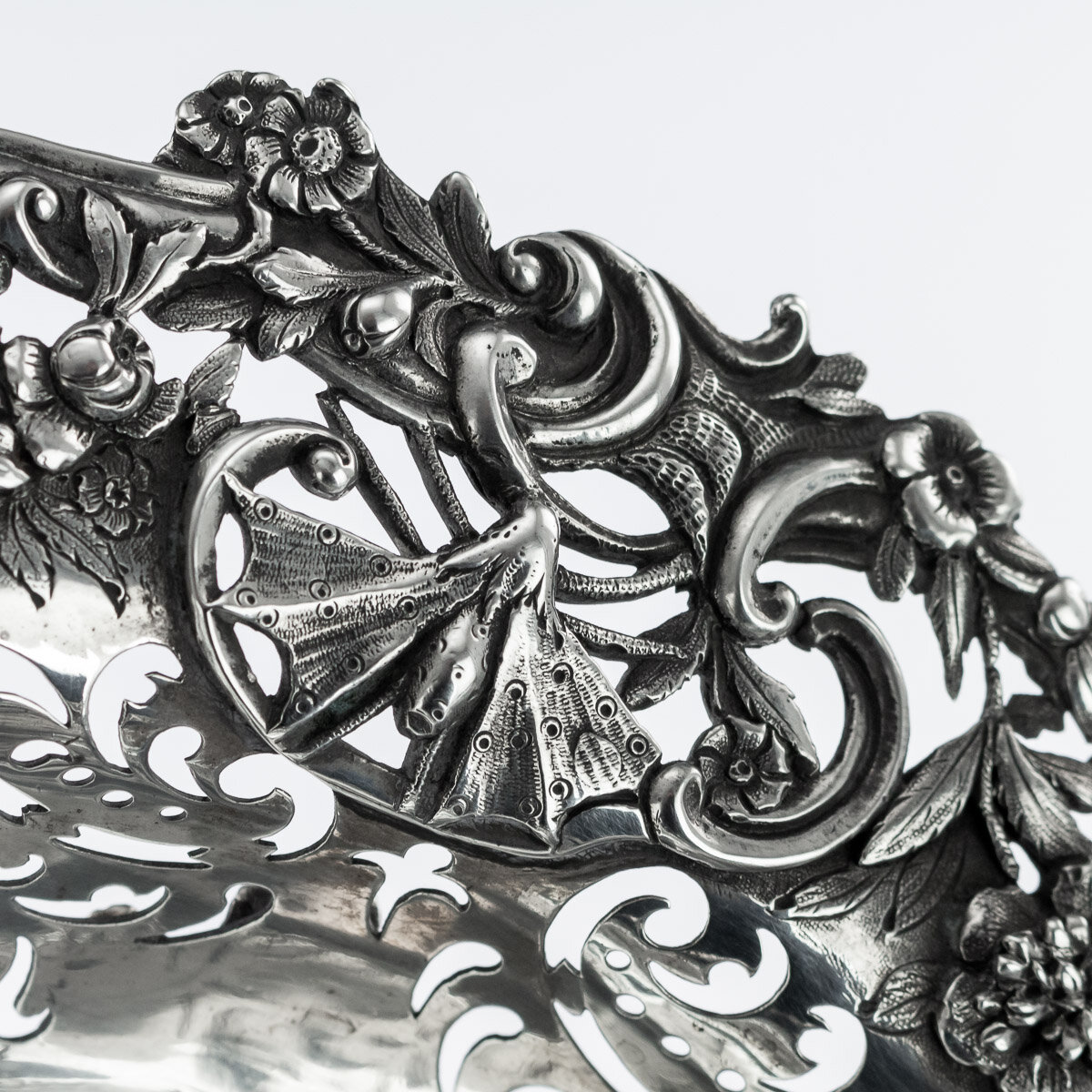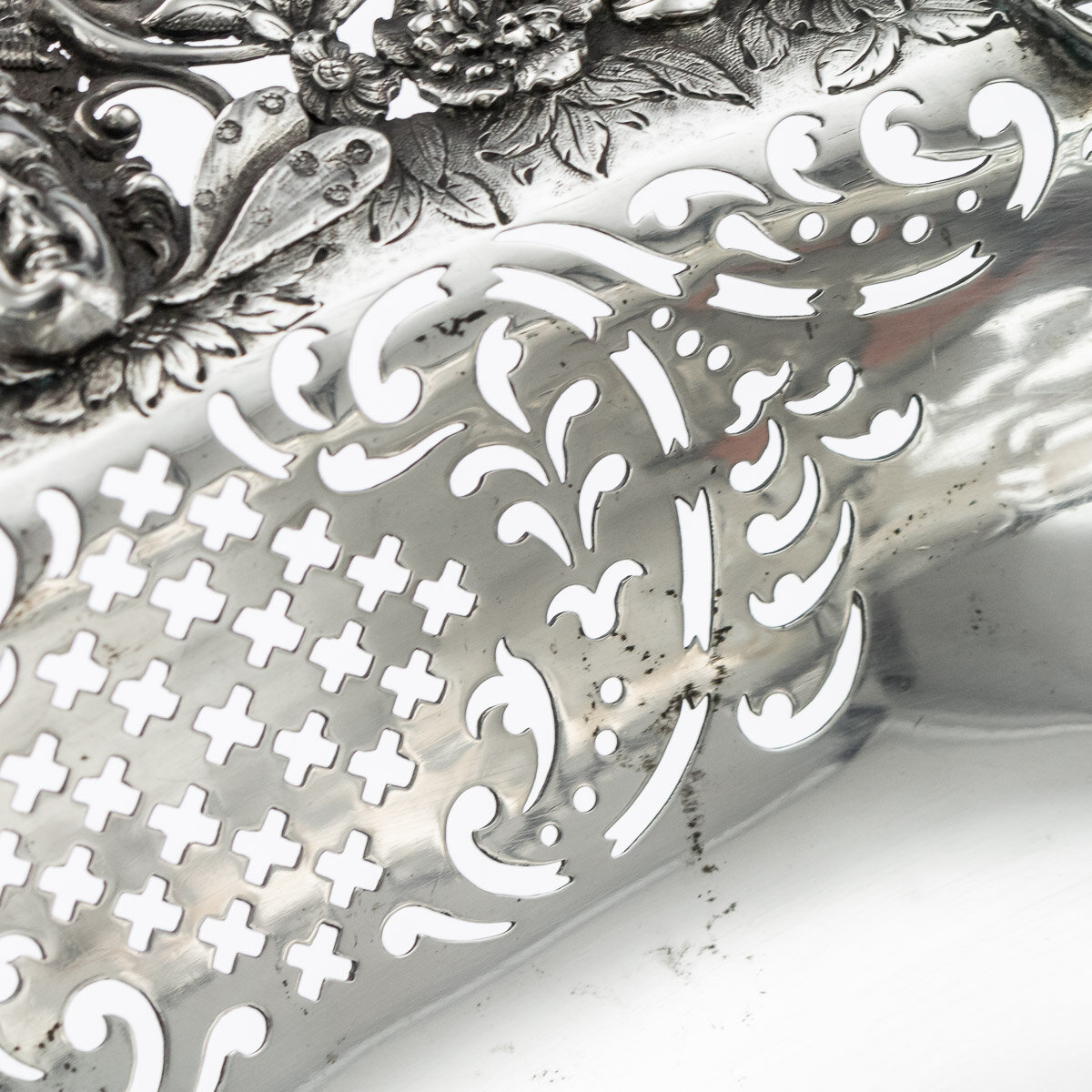ANTIQUE 19thC GEORGIAN SOLID SILVER BASKET, EDWARD FARRELL, LONDON c.1822
19th Century Georgian silver basket, on four cast mask, ruffle and scroll feet, the shaped oval body pierced along the sides and applied with a border of cast and pierced winged masks, moths, festoons, flowers and foliage among scrollage, swing handle springing from leaf-capped scroll caryatids.
Hallmarked English silver (925), London, year 1822 (g), Maker's mark E.F (Edward Farrell)
Reference Number: C6820
19th Century Georgian silver basket, on four cast mask, ruffle and scroll feet, the shaped oval body pierced along the sides and applied with a border of cast and pierced winged masks, moths, festoons, flowers and foliage among scrollage, swing handle springing from leaf-capped scroll caryatids.
Hallmarked English silver (925), London, year 1822 (g), Maker's mark E.F (Edward Farrell)
Reference Number: C6820
19th Century Georgian silver basket, on four cast mask, ruffle and scroll feet, the shaped oval body pierced along the sides and applied with a border of cast and pierced winged masks, moths, festoons, flowers and foliage among scrollage, swing handle springing from leaf-capped scroll caryatids.
Hallmarked English silver (925), London, year 1822 (g), Maker's mark E.F (Edward Farrell)
Reference Number: C6820
DESCRIPTION
Antique 19th Century Georgian solid silver basket, on four cast mask, ruffle and scroll feet, the shaped oval body pierced along the sides and applied with a border of cast and pierced winged masks, moths, festoons, flowers and foliage among scrollage, swing handle springing from leaf-capped scroll caryatids.
Hallmarked English silver (925 standard), London, year 1822 (g), Maker's mark E.F (Edward Farrell)
Edward Farrell’s apprenticeship and early life is almost completely unrecorded. Although described in Holden's Triennial Directory of 1805-7 as a silversmith, we don’t have any information about his work until 1813, when he registered his first mark. The most productive phase of his career began when he associated with Kensington Lewis, a silversmith and retailer who counted the Duke of York among his prestigious clients.
Their collaboration lasted from about 1816, until the mid 1830’s and during this period Farrell was commissioned large and remarkable sculptural pieces. His flourishing imagination was influenced by 17th Century Flemish and German paintings. His tea services are often embossed with tavern and popular scenes inspired by Teniers the Younger’s genre paintings. Farrell also experimented unusual designs after the Renaissance and Baroque, as well as in the most popular Rococo revival.
After the death of the Duke of York, in 1827, he continued working in a smaller scale. The remarkable silver gilt candelabrum displayed at the Victoria and Albert Museum and featuring Neptune riding a seahorse is a significant example of Farrell’s creativity and skills. It was part of a large scale garniture ordered by the Duke of York probably around 1819.
CONDITION
In Great Condition - No Damage.
SIZE
Height: 32cm
Width: 38 x 32cm
Weight: 1735g



















